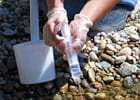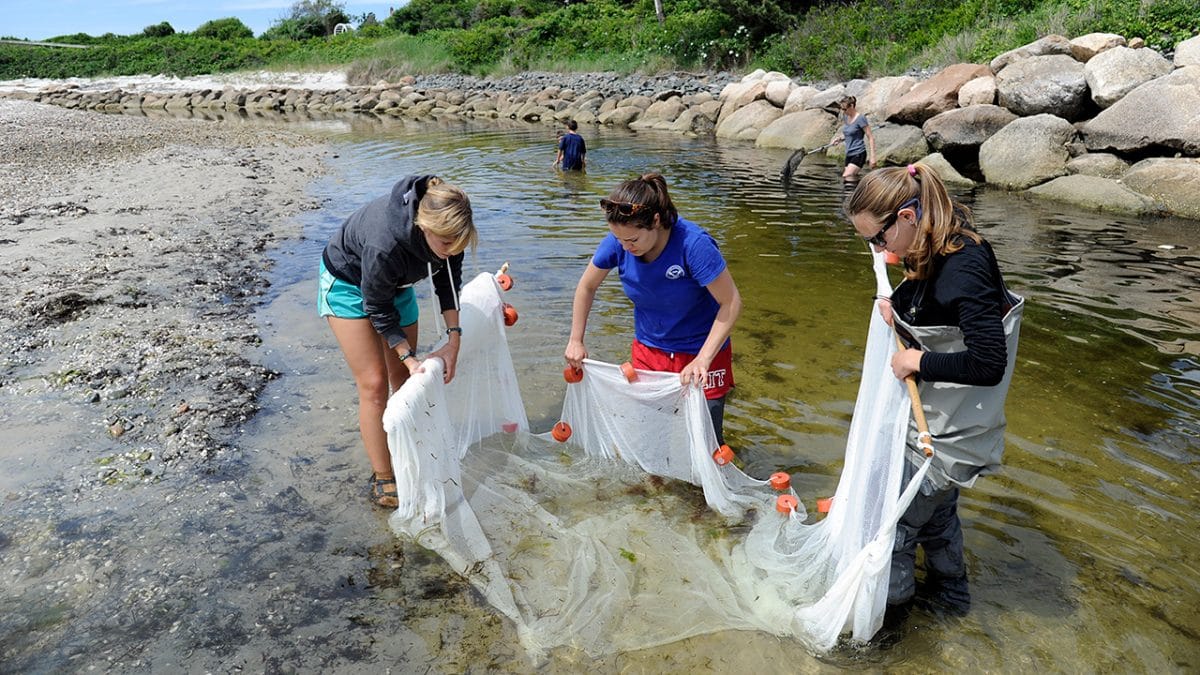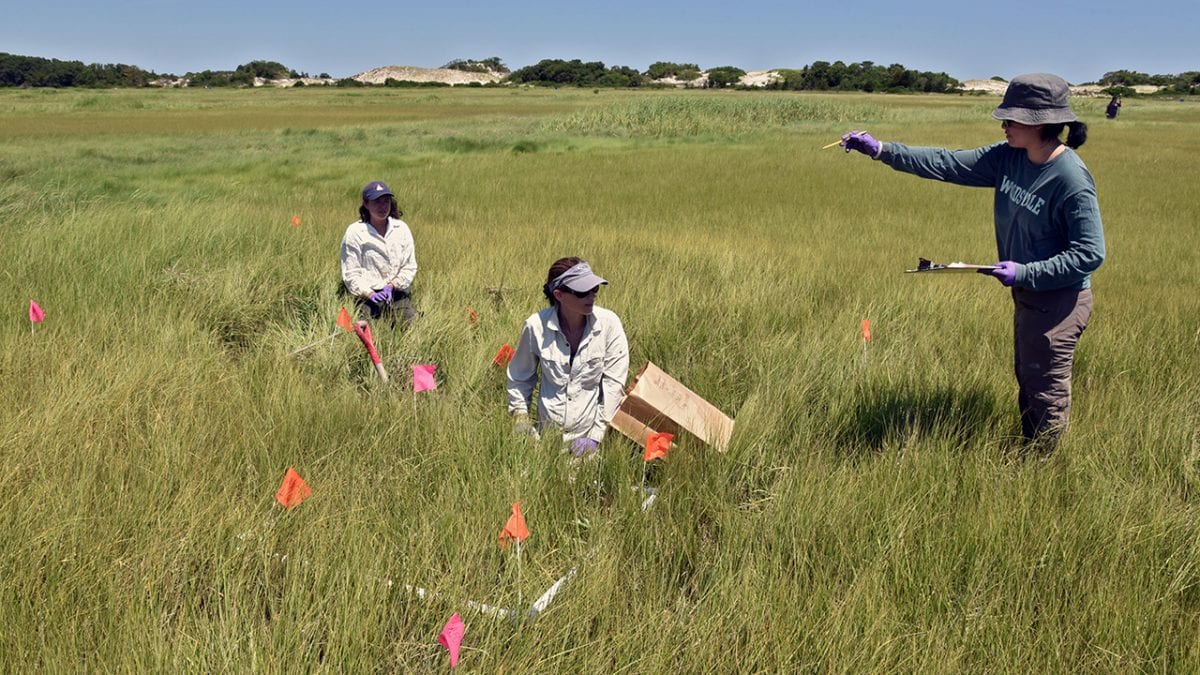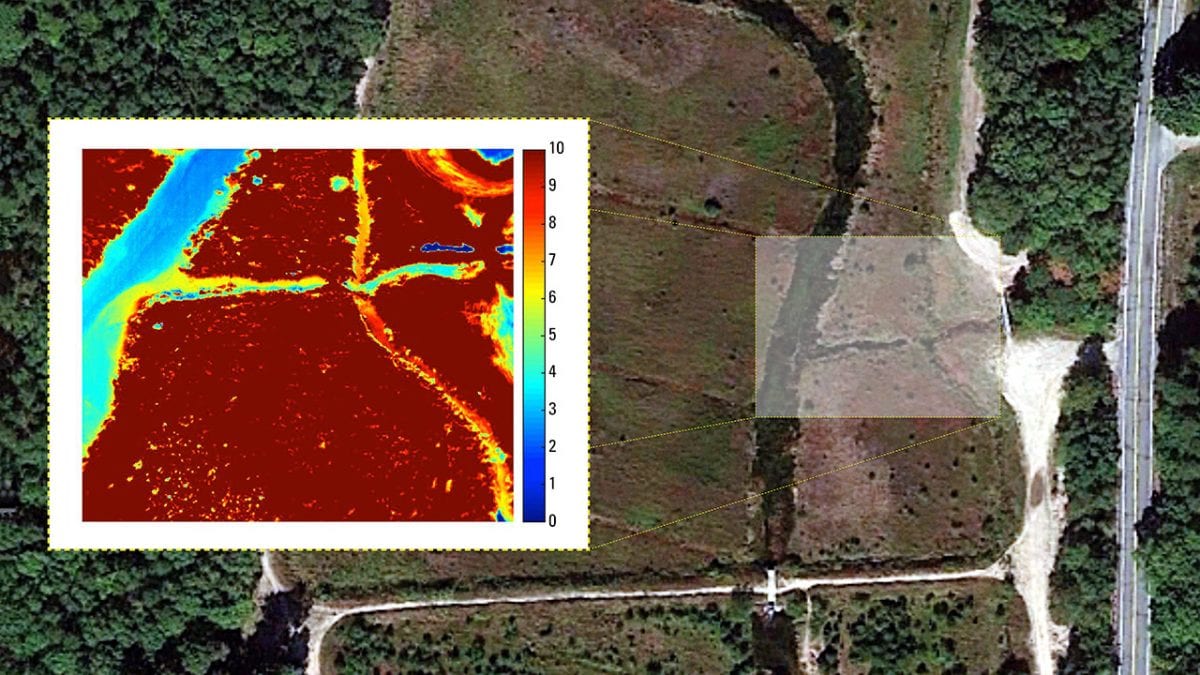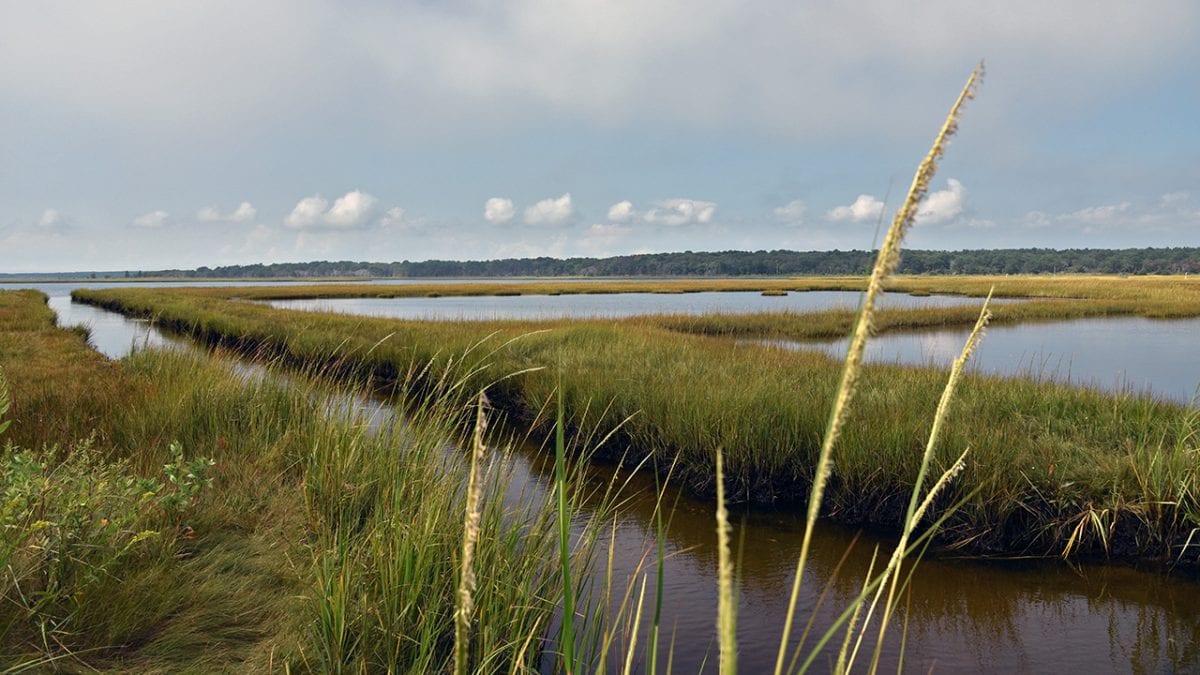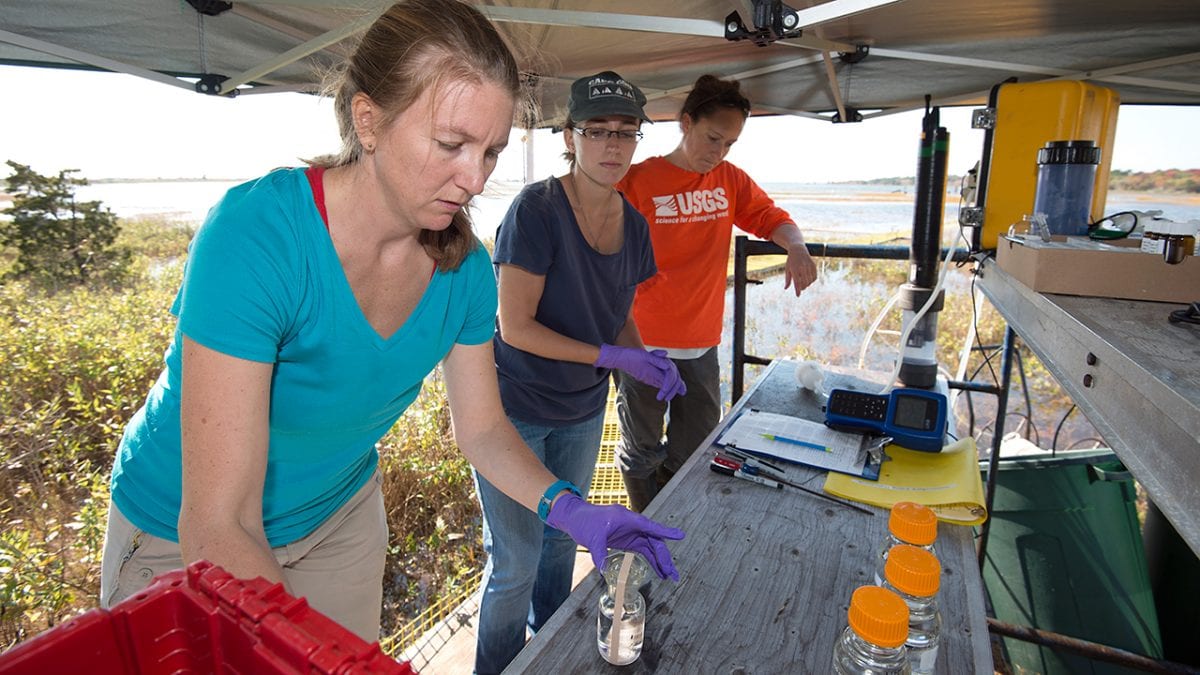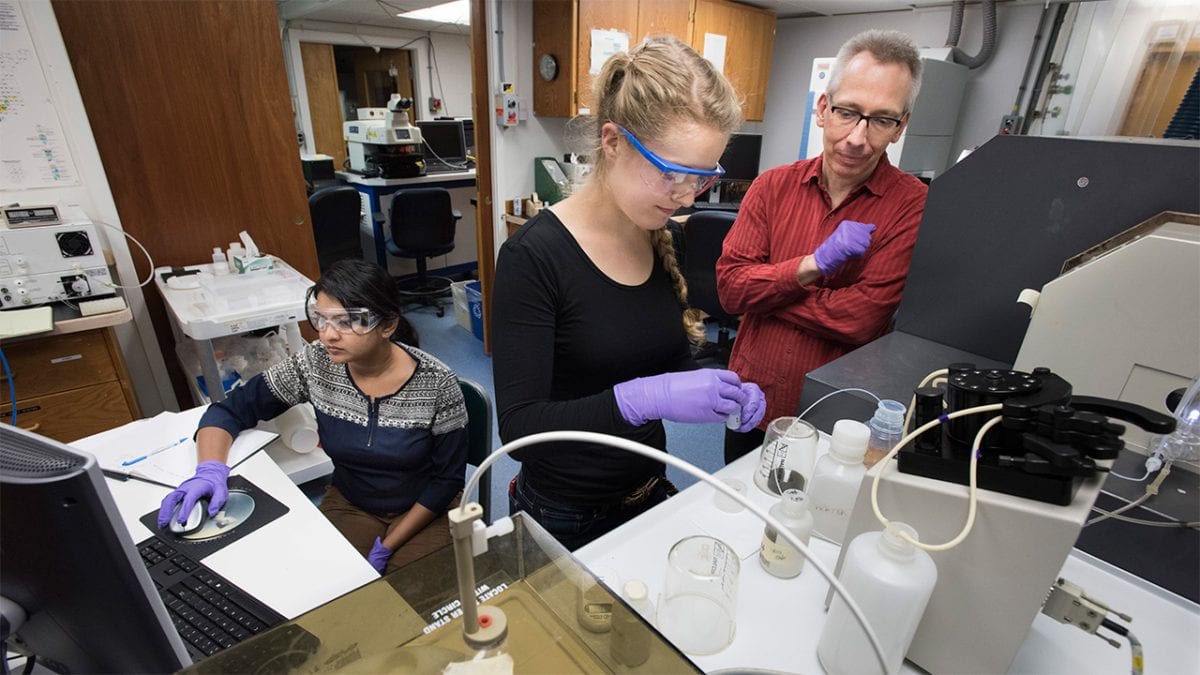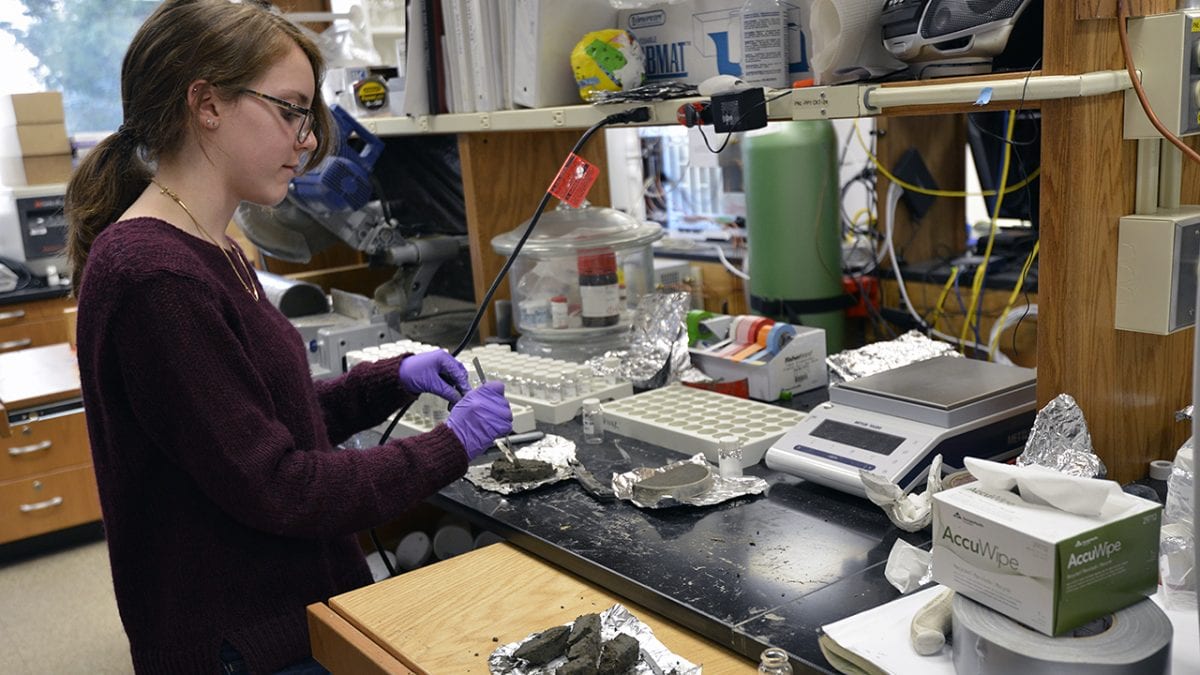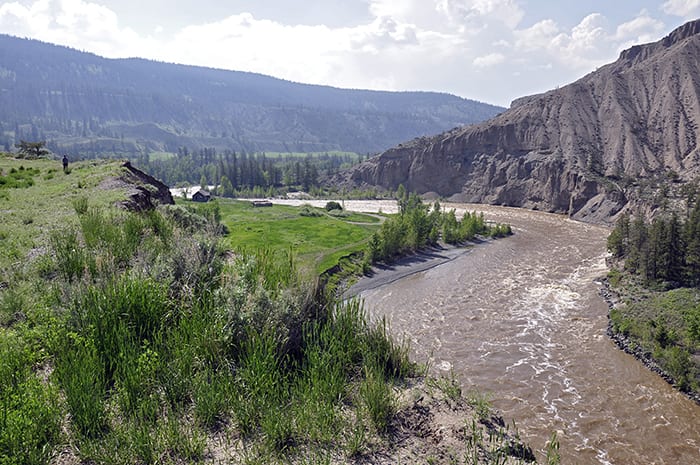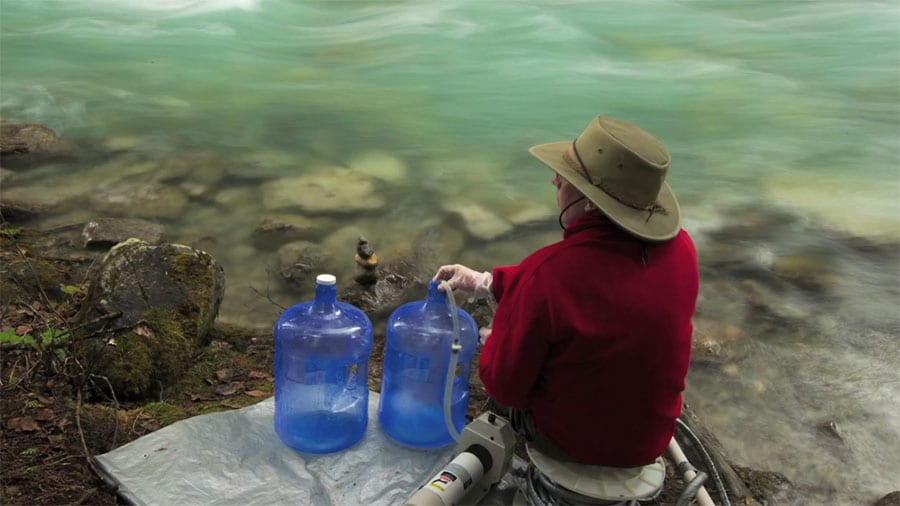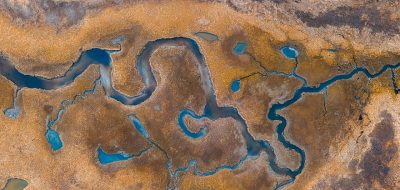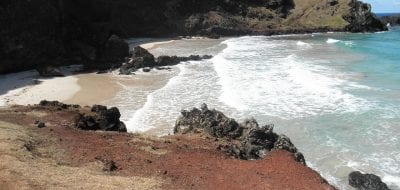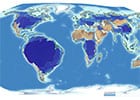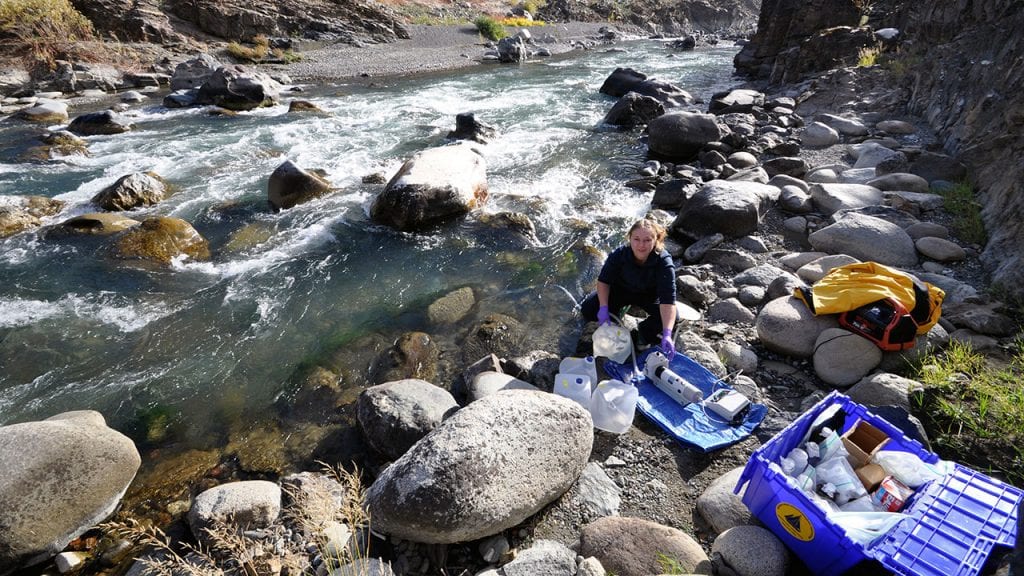
(Woods Hole Oceanographic Institution)
What are rivers, estuaries, and deltas?
The vast majority of freshwater that originates on land via rain, snowfall, and groundwater eventually reaches the ocean. This water travels downhill via streams and rivers, transporting dissolved ions and nutrients, sediment, and pollution as it goes. These waterways are strongly affected by human activities, such as fertilizer use, damming, deforestation, and construction.
Rivers are bands of freshwater carried downhill by the force of gravity. They are fed by smaller tributaries and can, themselves, merge with other tributaries to form even larger rivers.
Estuaries are stretches where rivers approach the ocean. They are influenced by freshwater from upstream as well as the influx of saltwater from rising tides.
Deltas are areas near the mouth of a river or estuary, where these moving bodies of water deposit large amounts of sediment.
Rivers
Rain, meltwater, and sometimes groundwater run downhill, pulled by gravity into valleys. Here the water accumulates and forms small creeks. Where valleys merge, so too do the creeks, forming streams, which later merge to form rivers. These smaller streams and creeks are called tributaries, and they form a network of branches that collect water from a large area of land. All land that drains into one river system is called a watershed or drainage basin, and all activities that take place on that land have the potential to impact rivers downstream. This includes use of fertilizers and pesticides on lawns or farm fields, mining operations, loss of topsoil, and more.
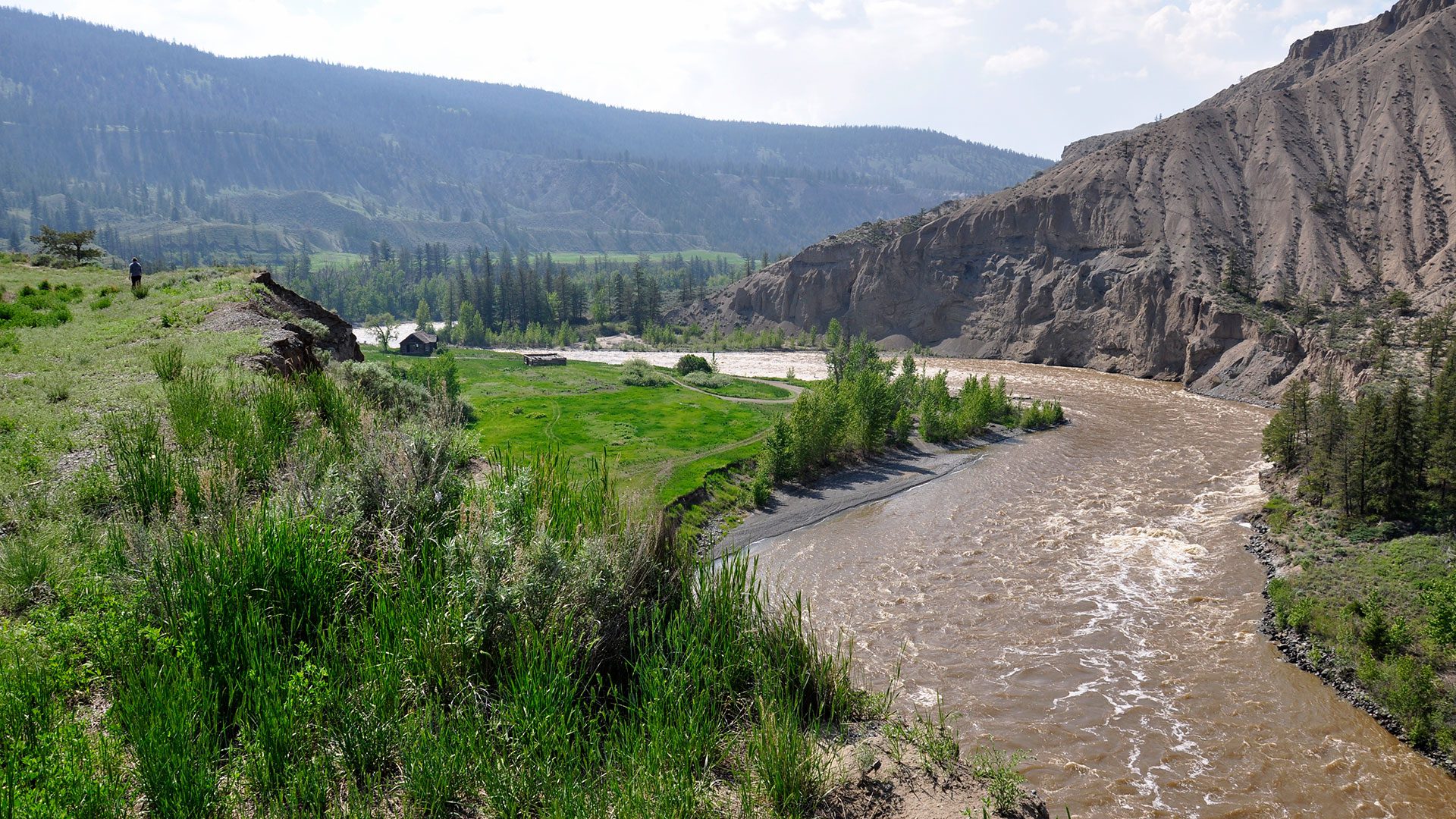
Canada's Fraser River transports more than water it also transports clues that can help scientists understand the global carbon cycle. As the river winds from the Rocky Mountains and Coast Range toward the ocean, it picks up carbon from the atmosphere, rocks and plants. Some of this carbon is deposited into the ocean, where it can lie buried on the seafloor for millions of years. Scientists participating in the Global Rivers Observatory analyze rivers like the Fraser to track the age of sediments, where they came from, where carbon enters and exits the river, and ultimately how this complex process influences Earths climate. (Photo courtesy of Bernhard Peucker-Ehrenbrink, Woods Hole Oceanographic Institution)
As water flows toward the ocean, it erodes the earth, picking up sediment as it travels. Small pieces of sediment stay suspended in the water column, but strong flows also move larger pieces of gravel and rock. These roll along the riverbed as they go, which wears down the outer surface of individual grains of rock, contributing to the smooth appearance of river rock.
When left to flow naturally, rivers meander, shifting their banks over time. Sediment from upstream may be deposited as sand bars form in the middle of the river, providing temporary habitat for birds and other animals. Annual floods contribute to changes in the river’s course, as large volumes of fast-flowing water can displace sand bars and carve new channels into the floodplain. Sediment picked up during floods can be transported all the way to the ocean.
Rivers are the lifeblood of almost all terrestrial life. The power they contain can be harnessed with hydroelectric dams, but construction of dams vastly alters the ecosystems both up- and downstream by removing streamside habitat, changing water temperatures, and trapping sediment. These changes have had profound effects on fish populations and those of other aquatic organisms, and can also impact the chemistry, biology, and ecosystems of coastal areas where the rivers discharge.
Estuaries
As rivers near the ocean, they reach a point at which saltwater from incoming tides begins to mix with freshwater flowing downstream. This creates the brackish conditions of an estuary. The two types of water are not always evenly mixed, however. The salinity of any location in an estuary varies with the rate of freshwater flow, strength of incoming tides, wind speed and direction, and estuary shape, all of which can and do change over time.
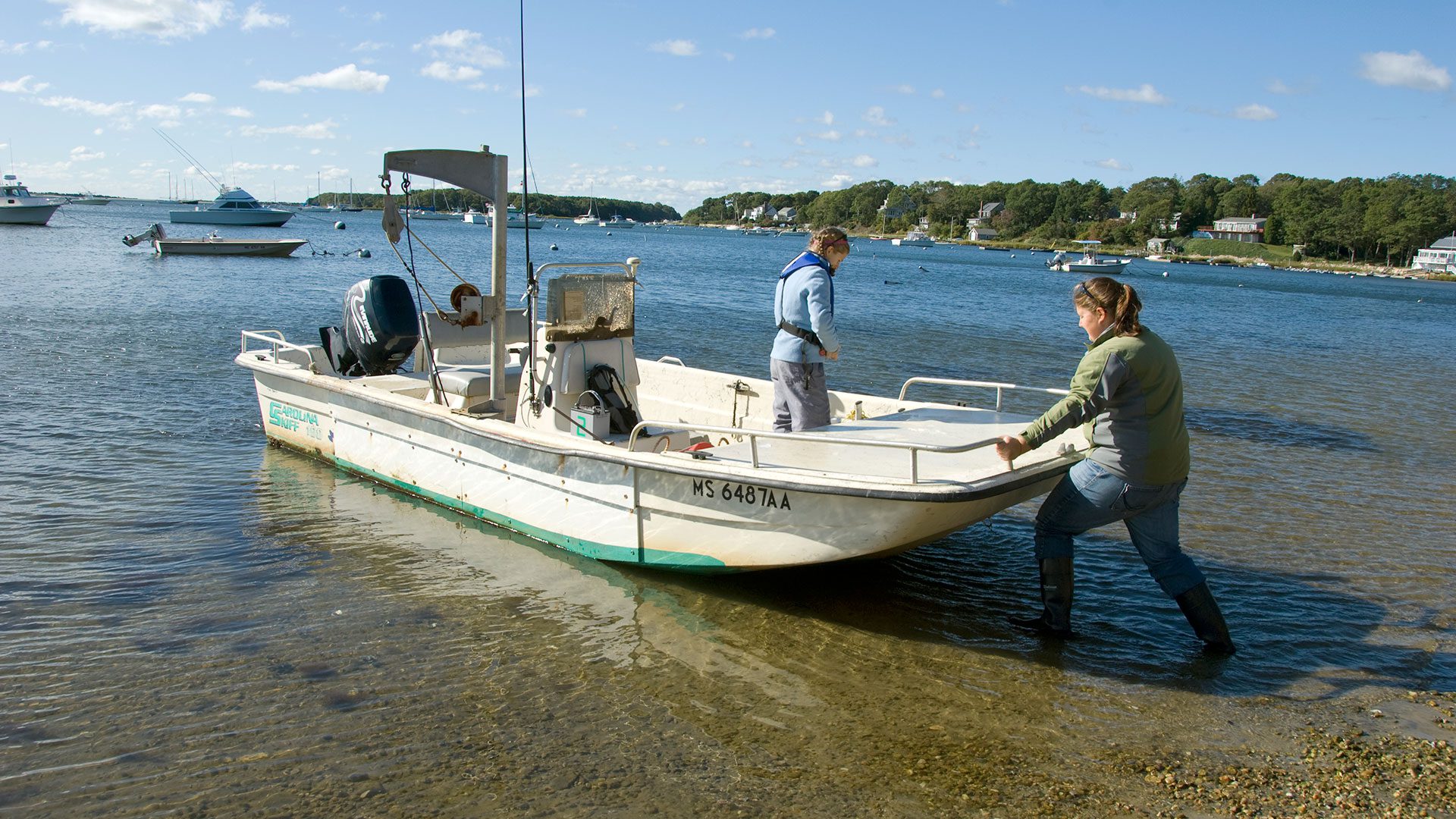
MIT-WHOI Joint Program Student Christine Mingione was collecting water samples from Waquoit Bay and Little River at the Waquoit Bay National Estuarine Research Reserve. (Photo by Tom Kleindinst, © Woods Hole Oceanographic Institution)
In geologic terms, estuaries are defined by their shapes and origins. Broad, relatively shallow estuaries are the result of drowned river valleys—rivers that were inundated by rising seawater when ice sheets melted after the last Ice Age. In some areas, glaciers carved out deep, V-shaped fjords along coastlines. These estuaries are separated from the ocean by a shallow sill that prevents extensive movement of saltwater up into the estuary. Abrupt movement of tectonic plates can cause land to sink, creating tectonic estuaries. And some estuaries are the result of sand accumulation, which creates barrier beaches and barrier islands. These bar-built estuaries often have a protected lagoon with little freshwater flow during most of the year.
When freshwater meets saltwater, mixing occurs, and the extent of mixing is also used to define estuaries. In a salt-wedge estuary, freshwater traveling downstream flows over the top of encroaching saltwater, which is denser than freshwater. In areas with fast-flowing rivers and weak tides, the two masses of water remain largely separate, although some mixing occurs along the barrier. Very large rivers, such as the Mississippi and Amazon, have such a strong flow that mixing of fresh- and saltwater only occurs beyond the river mouth.
Fjords similarly have little mixing of fresh and saltwater, in this case because of the shallow sill, which creates a barrier to incoming seawater. Fresh water flows over the sill and out into the ocean, but the water trapped behind the sill tends to become stagnant and deprived of oxygen.
Other estuaries have water that is better mixed, with slightly stratified estuaries experiencing some mixing of fresh- and saltwater at all depths. These estuaries tend to be saltier near the bottom, with salinity decreasing near the surface. Vertically mixed estuaries are well mixed with consistent salinity from top to bottom.
Estuaries are biologically diverse locations home to a myriad of organisms adapted to survive in the brackish, ever-changing waters. As water moves through estuaries, the chemical composition of nutrients and other ions change, which can have broad impacts once that water reaches the ocean. They also trap much of the sediment transported downstream by rivers, and a muddy layer typically forms over the bottom of the estuary.
Deltas
As sediment builds up along the bottom of an estuary, it begins to form a delta. Continued accumulation of sediment can build land well beyond the mouth of the river. Deltas most often form when the sediment-rich river empties into a protected area, behind a reef, barrier island, seasonal sea ice, or into a small body of water, such as a gulf or sound. At the mouth, the river divides into smaller channels, each of which distributes sediment to a different lobe of the delta. Lobes do not stay in one location for long periods of time. Instead they shift as submarine depressions fill with sediment. Over thousands of years, the Mississippi Delta has shifted hundreds of kilometers (miles) along the Louisiana coast.
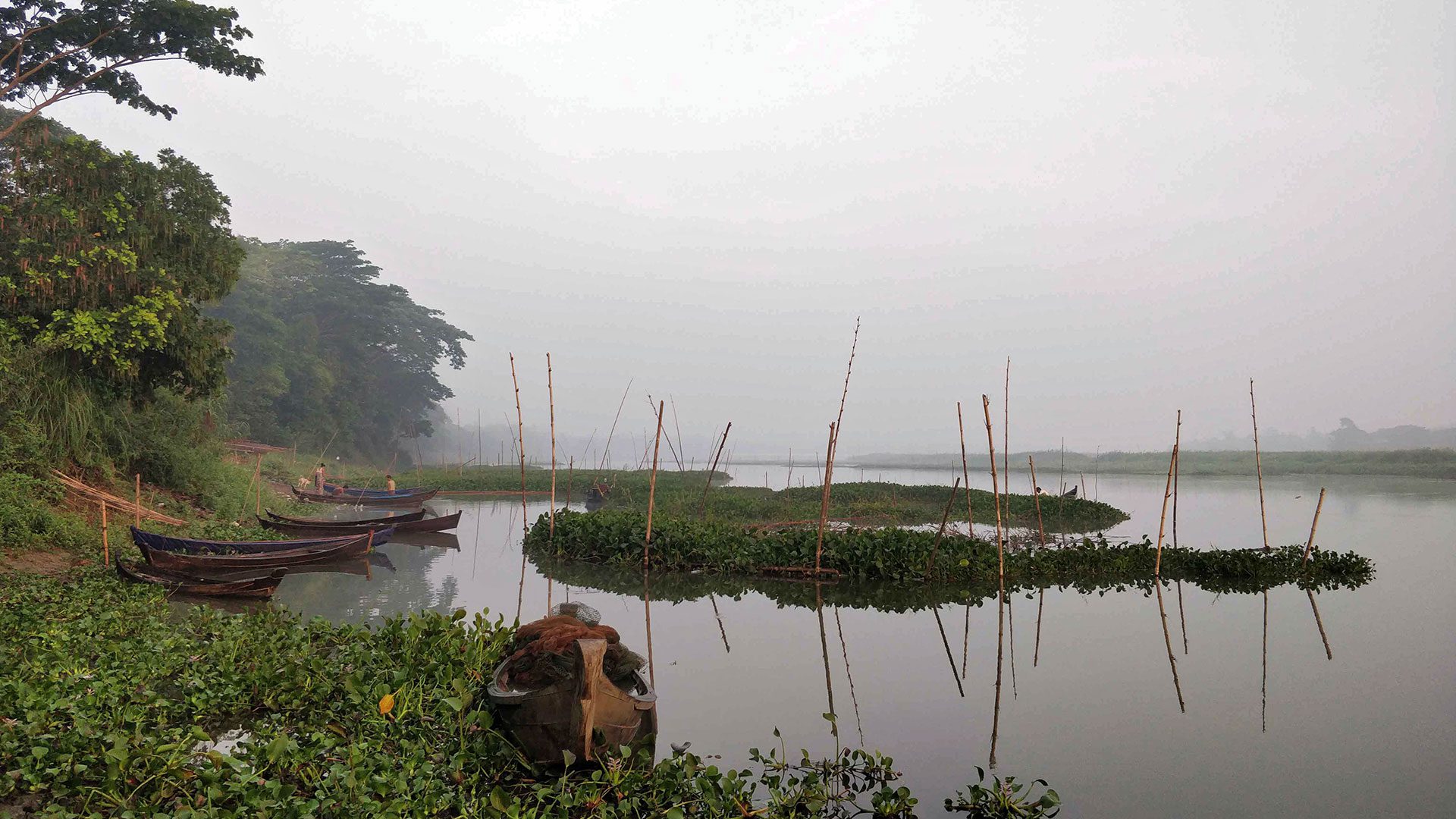
The Ayeyawady River delta in Myanmar is home to millions of people and is a hub of agricultural activity for the country. Unlike other large rivers across the world, it has been relatively untouched by large infrastructure and dam projects for the past 50 years. A new study led by WHOI geologist Liviu Giosan showed that shifts in monsoon climate have changed the shape of delta in the past, and suggests that human impact could drastically alter the region in the future. (Photo by Liviu Giosan, © Woods Hole Oceanographic Institution)
The shape of a delta is strongly affected by tidal currents and wave action, which move new sediment along the shoreline. Areas with little wave or tidal action often resemble a bird foot, with rounded lobes growing around each channel. Where there are strong tidal currents, the channels erode, creating islands between them. Areas with strong waves tend toward a scalloped shape, as waves eat away at the leading edge of the delta.
Like rivers and estuaries, deltas are biologically diverse and have a large impact on marine life, people, and the biogeochemical cycles of many elements.
Bianchi, T.S. & M.A. Allison. Large-river delta-front estuaries as natural “recorder” of global environmental change. PNAS, vol. 106. May 19, 2009. doi:10.1073/pnas.0812878106.
NOAA National Ocean Service. Classifying estuaries: By geology. https://oceanservice.noaa.gov/education/tutorial_estuaries/est04_geology.html
NOAA National Ocean Service. Classifying estuaries: By water circulation. https://oceanservice.noaa.gov/education/tutorial_estuaries/est05_circulation.html
University of Washington. Estuaries and Deltas. http://rocky.ess.washington.edu/grg/oldcourses/courses07_08/ess230/lectures/Estuaries-and-Deltas-lecture.pdf
Wampler, P.J. Rivers and streams –water and sediment in motion. Nature Education Knowledge. 2012. https://www.nature.com/scitable/knowledge/library/rivers-and-streams-water-and-26405398/
All Topics on Rivers, Estuaries, & Deltas
Interested in Helping us Study Rivers?
What you need to do We are looking for samples from most large rivers close to the ocean. If you live or are traveling to a river you think would…

